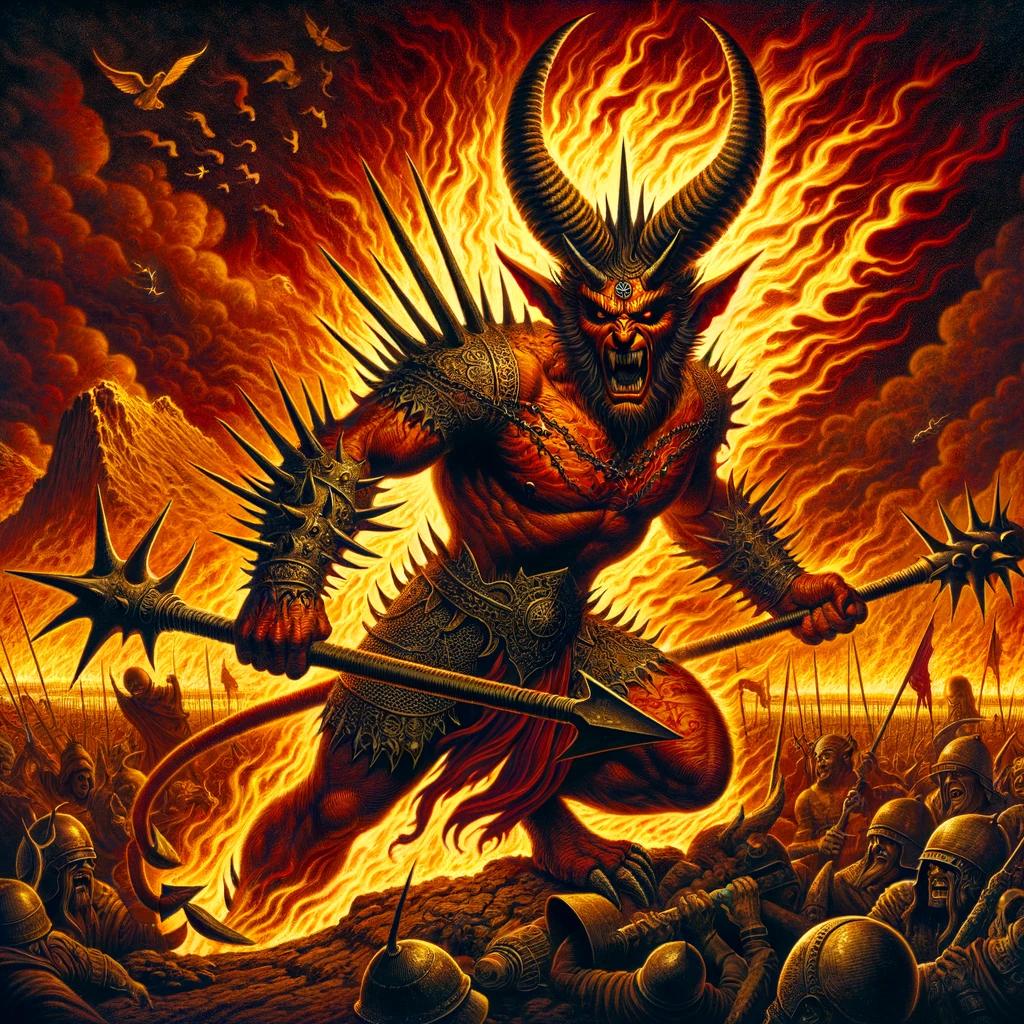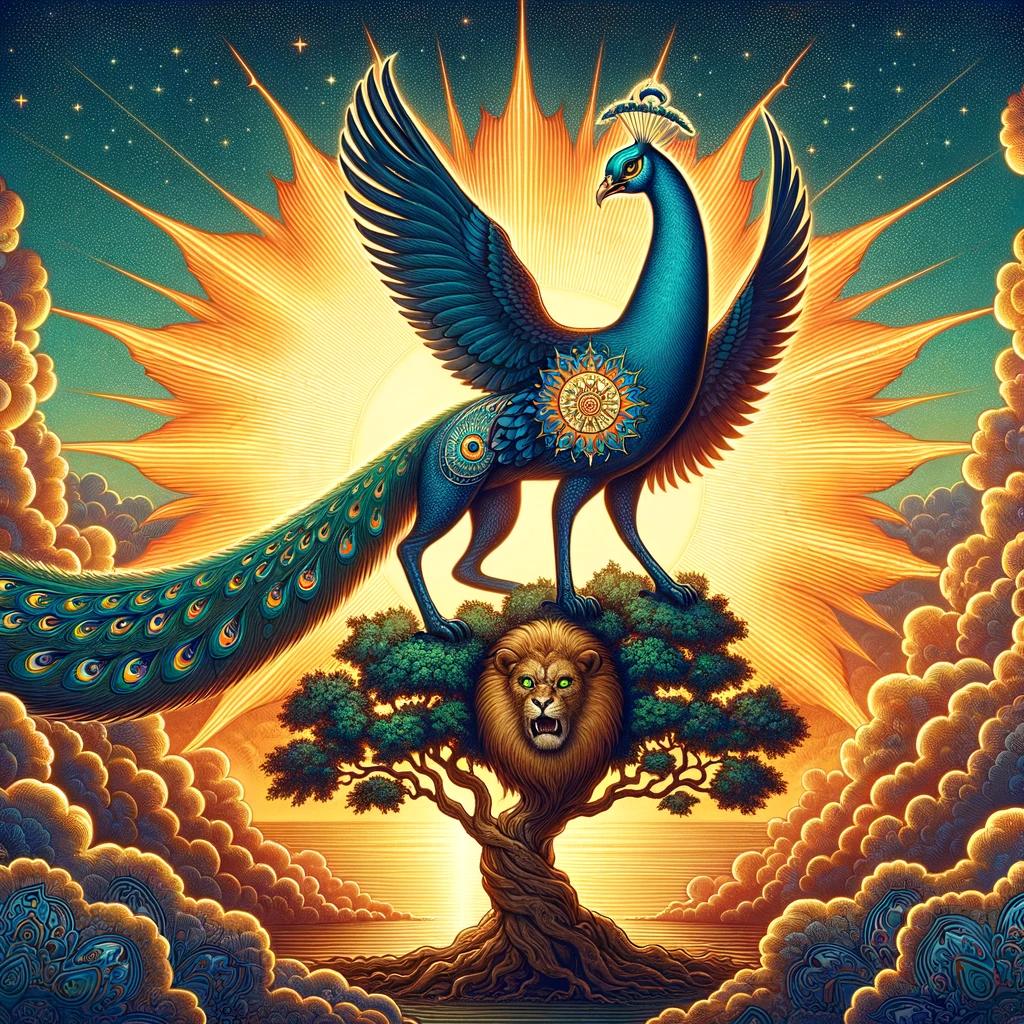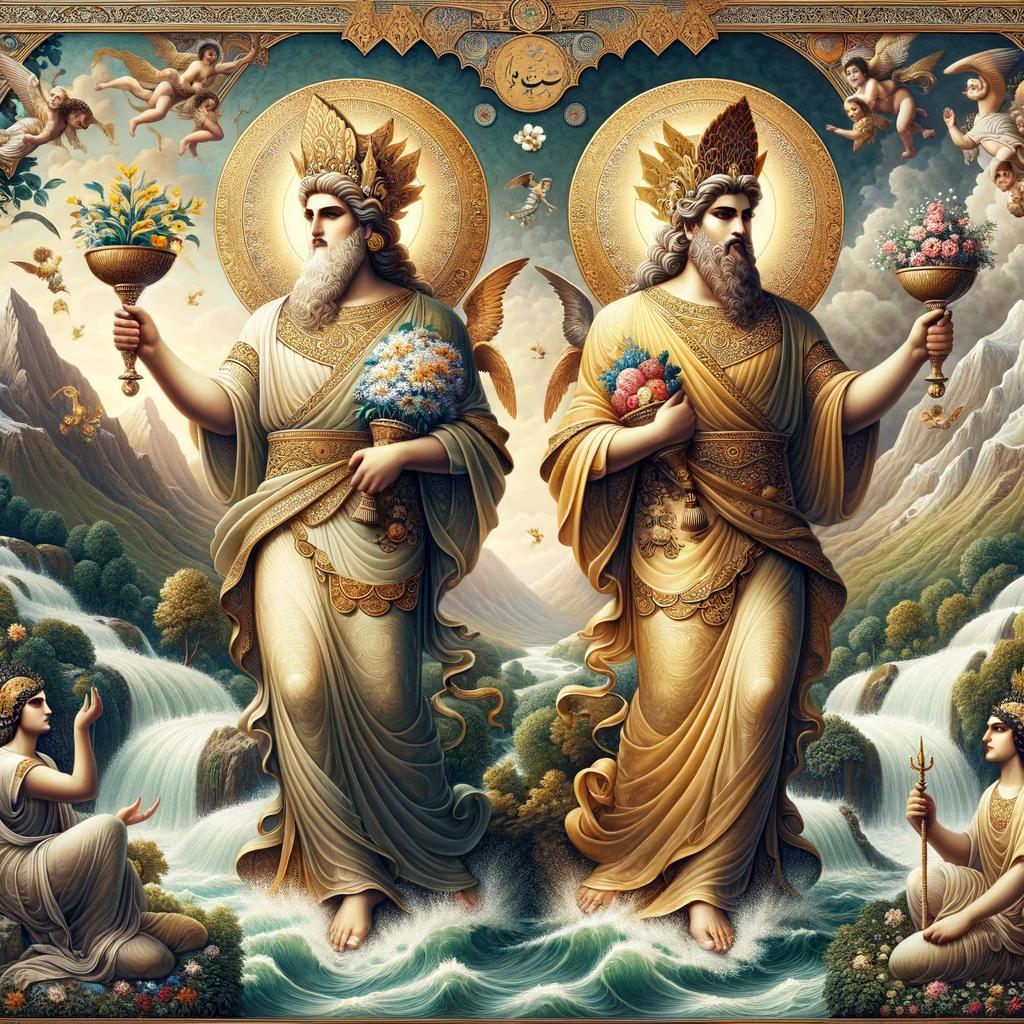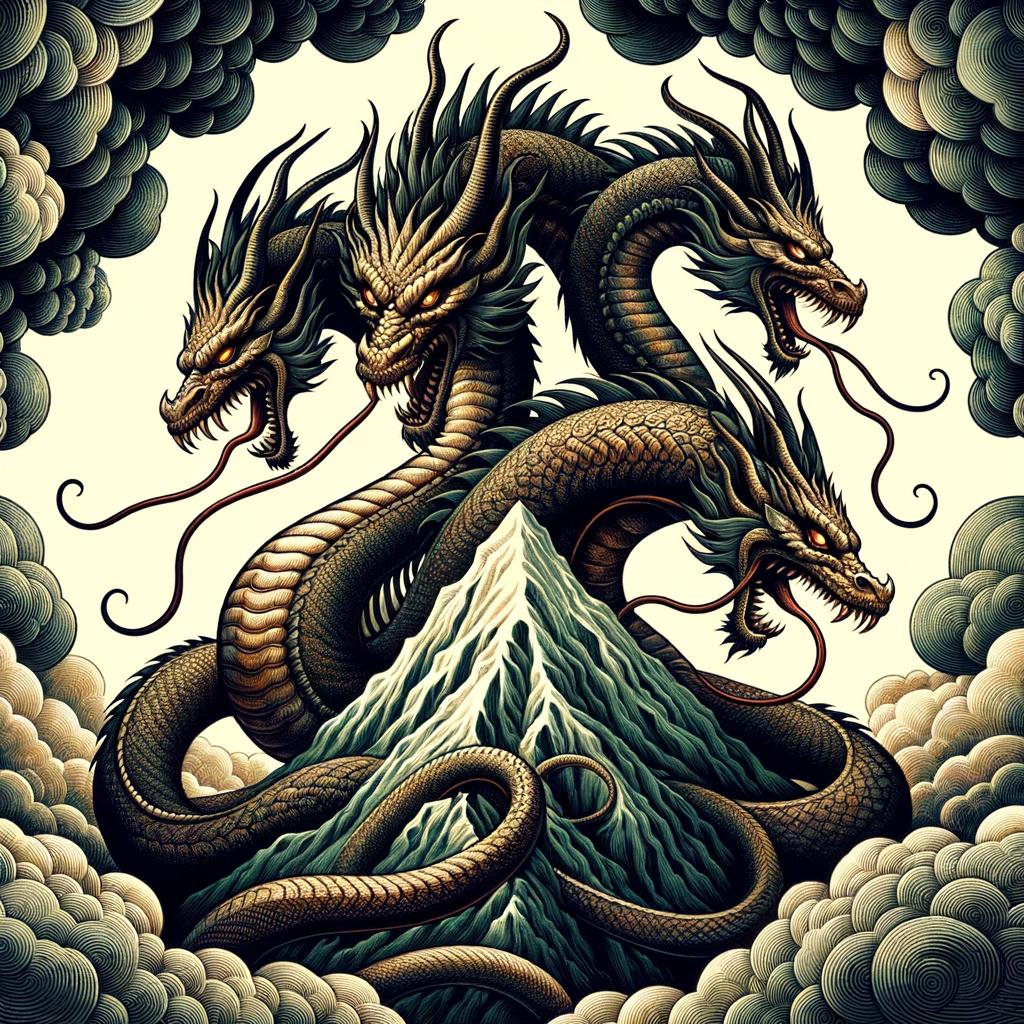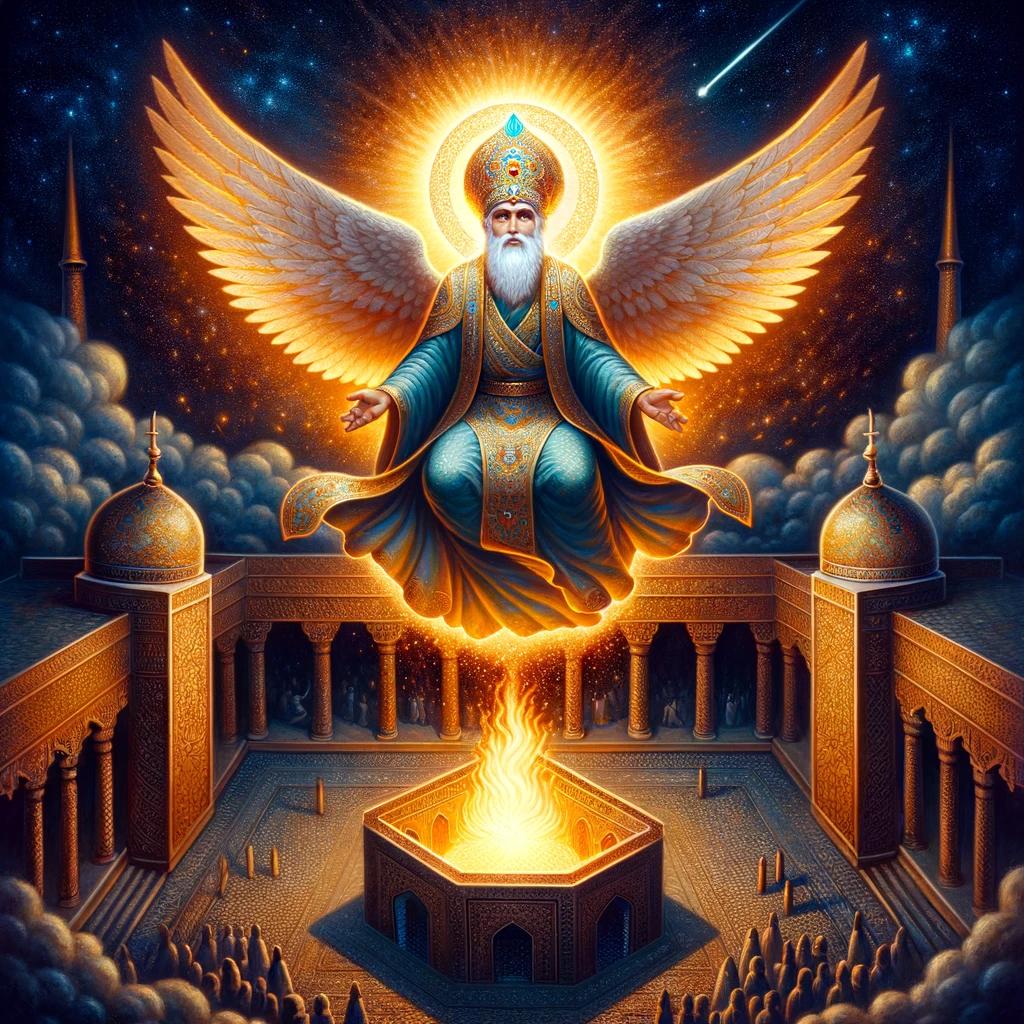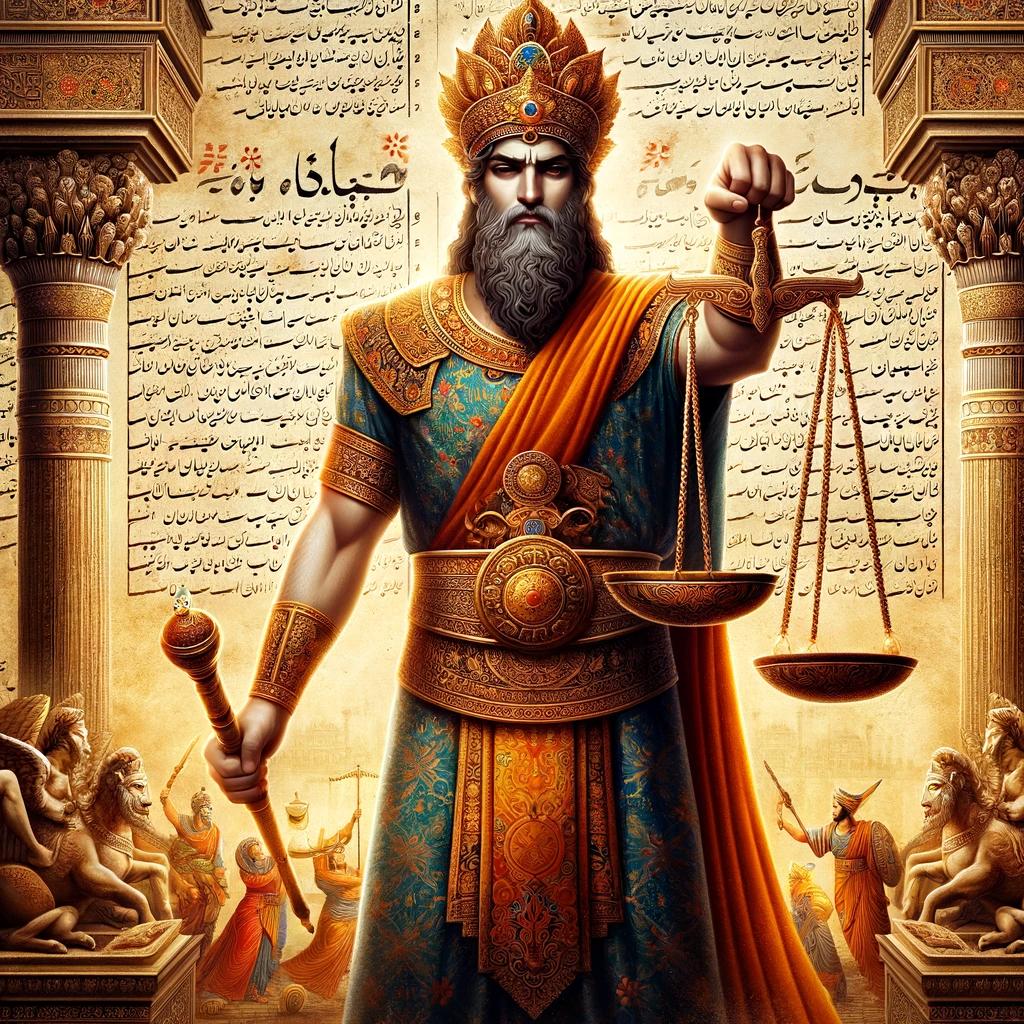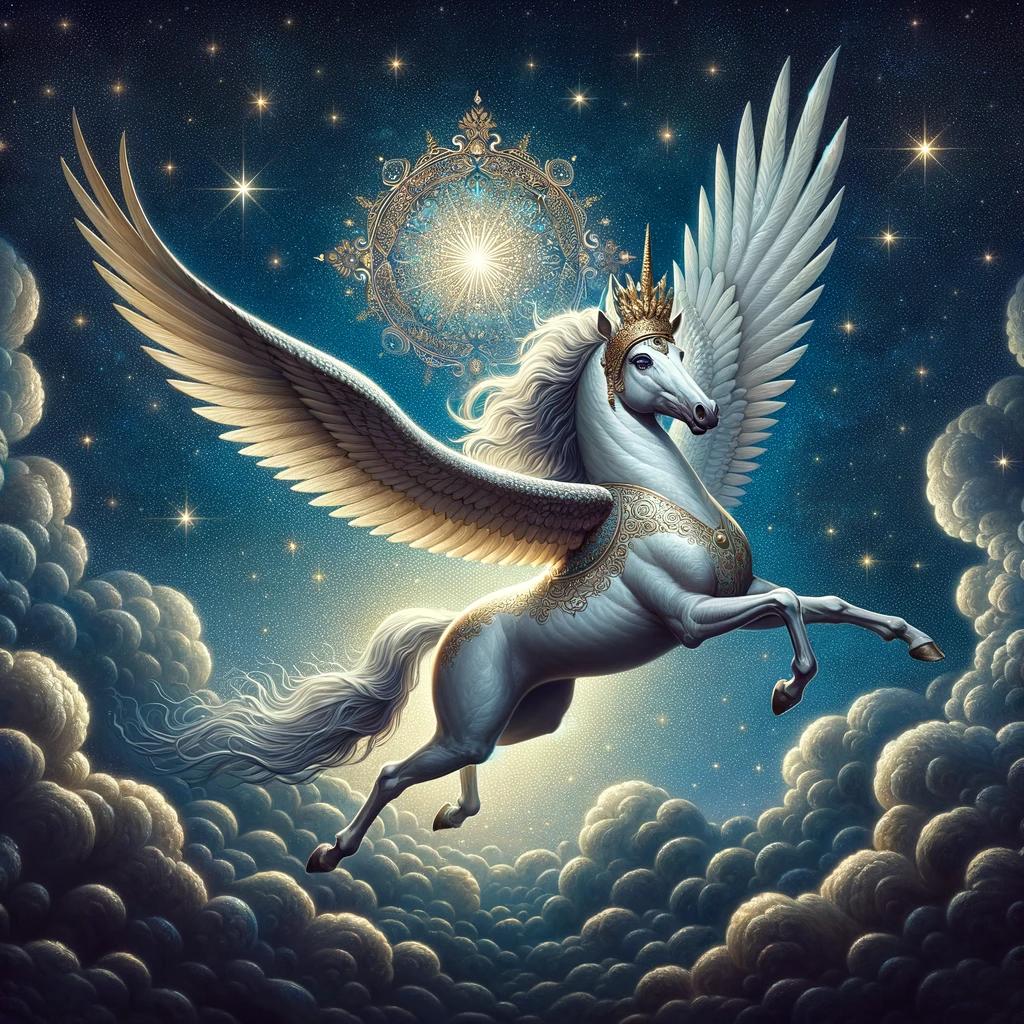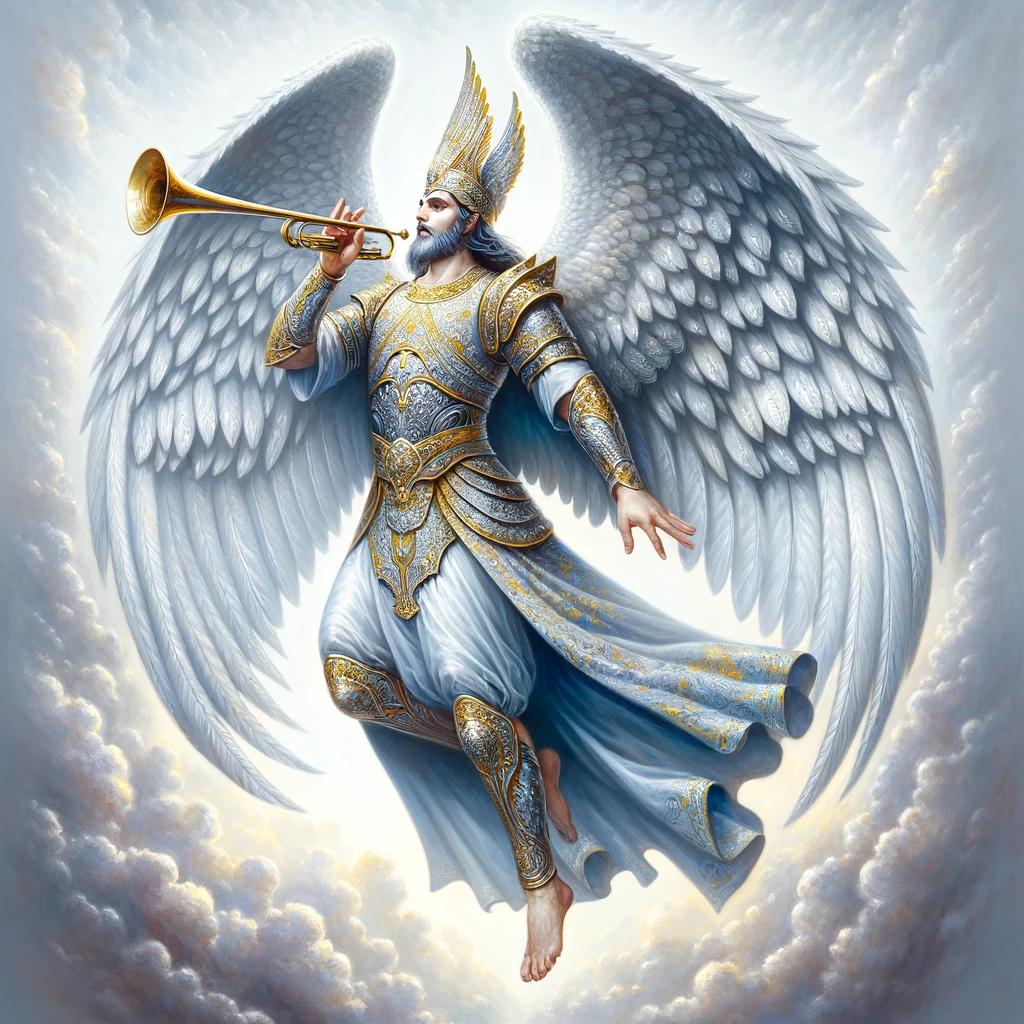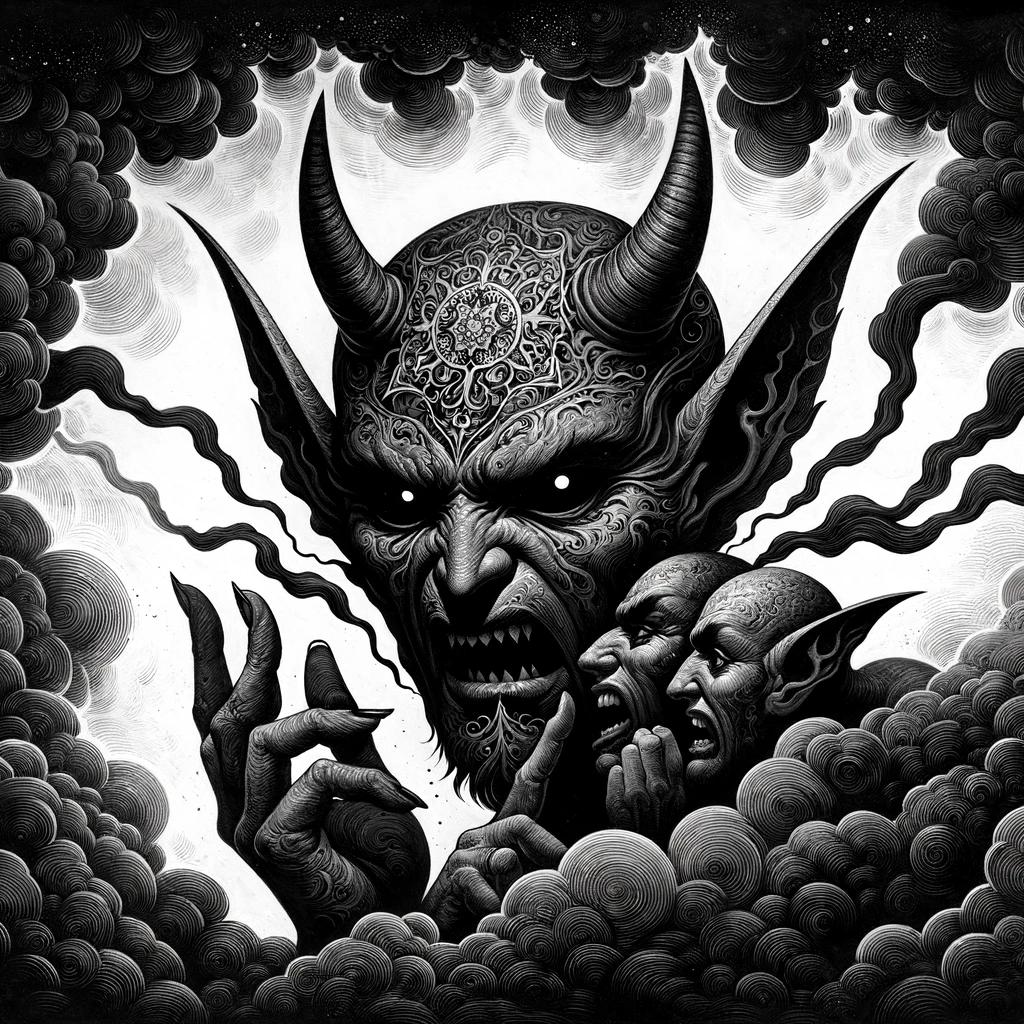Aeshma: The Demon of Wrath in Myth and Religion
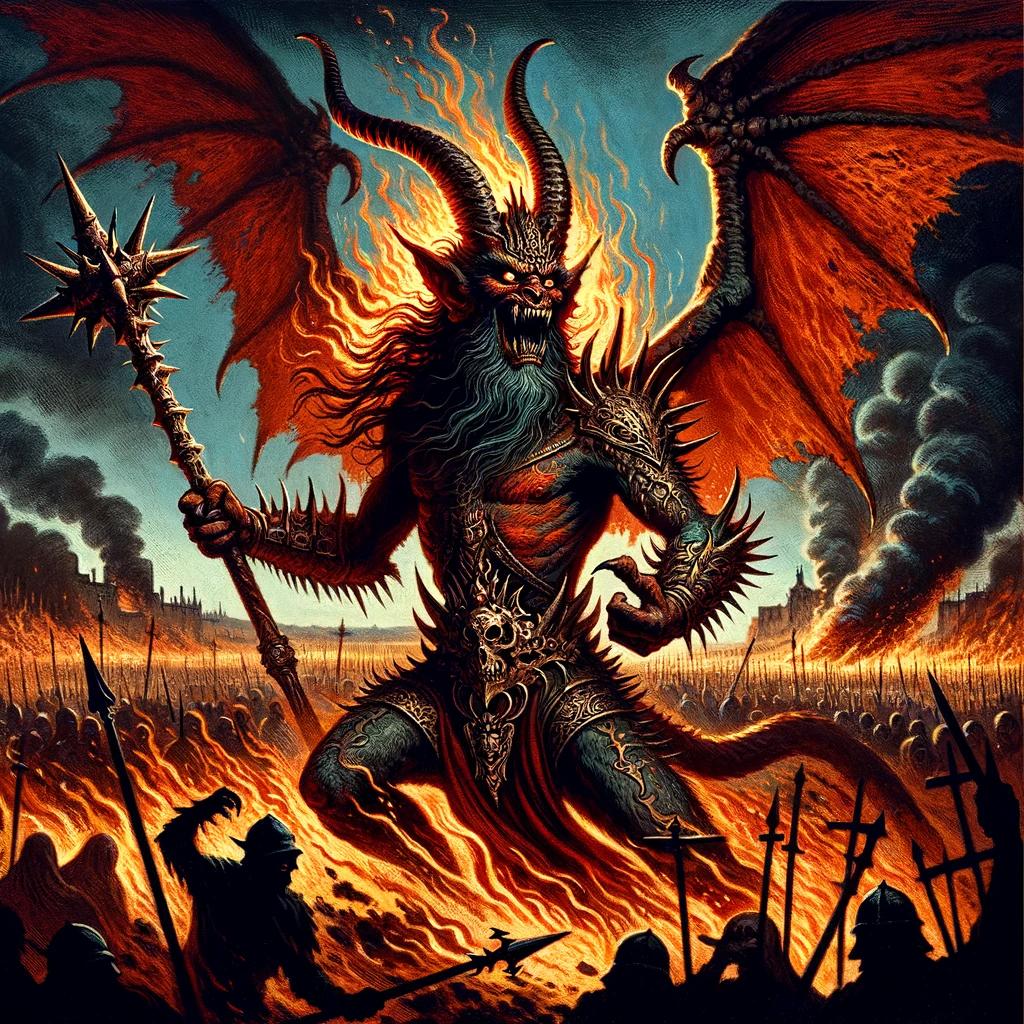
Aeshma, a powerful entity in demonology, holds significance in Zoroastrianism as the embodiment of wrath and fury. This fierce demon, also known as aeshma daeva and aesma daeva demon, is associated with acts of aggression and malevolence, both during times of war and under the influence of intoxication.
Aeshma’s opposition to Asha Vahishta, the spirit of Truth, and its interference with the souls approaching the Chinvat Bridge demonstrate its disruptive nature in religious devotion. In this article, we delve into the origins, symbolism, powers, and controversies surrounding Aeshma, exploring its connections in mythological texts and its presence in popular culture.
Understanding Aeshma and its Significance in Demonology
Aeshma holds a prominent position within the realm of demonology and plays a vital role in various belief systems, particularly in Zoroastrianism. This section aims to shed light on the essence and importance of Aeshma in understanding the complex world of demons, often linked to Asmodeus or Asmodeous in the Bible, representing wrath.
Aeshma’s notoriety stems from its association with wrath, fury, and aggression. As a fierce and malevolent being, Aeshma symbolizes the darker aspects of human nature and embodies the destructive forces that can lead individuals astray from the path of righteousness.
The significance of Aeshma in demonology lies in its role as the primary instigator of aggression and violence. In times of war or under the influence of intoxication, Aeshma’s presence is believed to fuel acts of aggression and cruelty, leading to havoc and suffering.
Within the context of Zoroastrianism, Aeshma stands as a formidable adversary to Asha Vahishta, the embodiment of truth and righteousness. This opposition represents the eternal struggle between good and evil, highlighting the immense power and influence Aeshma wields in battles that echo through fire temples and sacred texts like the Khordeh Avesta.
It is crucial to comprehend the role of Aeshma in demonology, as it provides insight into the depths of human darkness and the challenges faced in maintaining moral integrity. Exploring Aeshma’s significance grants us a deeper understanding of the potential dangers and temptations that exist within ourselves and the world around us.
Aeshma Pronunciation and Origins
Aeshma, pronounced as āsh-mah, finds its origins in the fascinating realm of demonology and Zoroastrianism. The name “Aeshma” comes from the Avestan language, an ancient Iranian language used in Zoroastrian scriptures, reflecting its deep roots in Persian language and culture.
The origins of Aeshma can be traced back to the Zoroastrian religion, which emerged in ancient Persia. This demon holds a significant place in Zoroastrian mythology, representing traits of anger, fury, and destructive forces.
The name itself evokes a sense of power and intensity, reflecting the nature of this formidable demon.
In Zoroastrian cosmology, Aeshma is believed to be one of the daevas, a group of malevolent spirits that oppose the divinely ordained order.
Revered as a force of wickedness and turmoil, Aeshma’s existence challenges the harmony and righteousness upheld by the religion, making it a central figure in the theological studies and debates within the Revayats and the teachings of Mazda Zarathustra.
The pronunciation and origins of Aeshma are closely intertwined with the cultural and religious context of Zoroastrianism. Understanding these aspects allows for a deeper appreciation of this awe-inspiring demon and its significance within demonology.
The Symbolism of Aeshma in Zoroastrianism
In Zoroastrianism, Aeshma holds deep symbolism that reflects the dark aspects of human nature and the perpetual battle between good and evil. Representing wrath and aggression, Aeshma embodies the destructive forces that disrupt harmony and order in the world.
Within the Zoroastrian cosmology, Aeshma stands in opposition to Asha Vahishta, the guardian of Truth and righteousness. This contrast highlights the struggle between chaos and order, highlighting the significance of Aeshma’s role in defining the boundaries of morality.
Aeshma’s symbolism extends beyond individual behavior and has implications for societal dynamics as well. It depicts the innate inclination towards violence, impulse, and uncontrolled fury. By personifying these qualities, Aeshma serves as a reminder of the consequences that such behaviors can have on both the individual and the community.
Moreover, Aeshma’s symbolism is closely linked to the concept of temptation and moral corruption. It is believed that this demon seeks to divert individuals from the path of righteousness and lead them astray.
Aeshma’s influence can disrupt religious devotion and interfere with the souls of the deceased as they embark on their journey through the Chinvat Bridge towards the afterlife.
In Zoroastrian texts, Aeshma is often depicted as a bloodthirsty creature, amplifying the destructive aspects of its symbolism.
This imagery serves as a cautionary tale, reminding believers of the dangers of succumbing to anger, violence, and impulsive behavior.
Furthermore, Aeshma’s role in Zoroastrian mythology exemplifies the importance of self-discipline and inner restraint.
Its opposition to Sraosha, the embodiment of devotion and religious discipline, emphasizes the need for individuals to uphold virtuous values and overcome the temptations posed by Aeshma.
Aeshma’s Symbolic Representations:
- A catalyst for chaos and violence
- A reminder of the consequences of uncontrolled wrath
- An embodiment of temptation and moral corruption
- A disruptor of religious devotion and spiritual progress
- An opponent to the virtues of truth and discipline
By understanding the symbolism of Aeshma in Zoroastrianism, adherents are encouraged to confront their own inner demons and strive for a balanced and righteous existence, ultimately contributing to the harmonious order of the world.
Aeshma Angel: Myth or Reality?
This notion adds depth and complexity to the understanding of this fierce entity.
As the subject of debate among scholars and enthusiasts, the existence of an Aeshma angel remains uncertain. Some theories propose that Aeshma was once an angel who fell from grace, transforming into a powerful and malevolent being.
Others argue that the concept of Aeshma as an angel might be purely symbolic, representing the duality of celestial and infernal forces manifested within this entity.
Within Zoroastrianism, the traditional characterization of Aeshma aligns with its classification as a demon associated with chaos and violence.
However, it is essential to acknowledge that religious and mythological interpretations can evolve over time, leading to various perspectives regarding Aeshma’s true nature.
While the discussion concerning Aeshma’s potential angelic origins is fascinating, it is important to approach this topic with an open mind and recognize the lack of definitive evidence.
Whether Aeshma is a myth, a symbolic representation, or a reality with angelic attributes, it remains an enigmatic figure that continues to captivate curiosity and inspire exploration.
Exploring the Powers and Attributes of Aeshma
Aeshma, the demon of wrath and fury in Zoroastrianism, possesses incredible powers that are as destructive as they are fearsome.
Let’s delve into the various attributes and capabilities associated with this formidable entity:
- Power of Aggression: Aeshma is renowned for embodying unrestrained aggression and violent tendencies. It is believed to fuel and inspire acts of aggression in individuals, particularly during times of war and conflict.
- Influence over Emotions: Aeshma’s powers extend to manipulating human emotions, especially anger and rage.
It is said to exploit these negative emotions to drive individuals towards destructive behaviors and violent actions.
- Control over Discord: Aeshma has a unique ability to sow discord and disharmony among individuals or communities.
It thrives on chaos and uses this indomitable power to disrupt unity, harmony, and peace.
- Stirring Hatred and Enmity: Another significant attribute of Aeshma is its capacity to incite intense hatred and foster enmity among individuals or groups of people.
It fuels animosity, promoting conflicts and divisions among societies.
- Fields of Carnage: Aeshma’s dominion lies within the bloody fields of battle. It revels in the violence and brutality of war, ensuring that carnage and destruction are perpetuated.
- Destruction and Annihilation: Aeshma possesses the power to unleash widespread destruction and annihilation.
It can bring ruin and devastation to both the physical and spiritual realms, leaving a trail of chaos in its wake.
These powers make Aeshma an incredibly formidable and dangerous force, capable of wreaking havoc on individuals, communities, and civilizations.
They highlight the demonic nature of this entity, emphasizing its role in promoting violence, discord, and destruction.
The Role of Aeshma in Zoroastrian Cosmology
In Zoroastrian cosmology, Aeshma plays a significant role as one of the Daeva demons. These demons are considered malevolent spirits who oppose the righteous forces in the universe. Aeshma, specifically associated with violence, anger, and chaos, serves as a powerful embodiment of destructive tendencies.
Within ancient Persian texts such as the Avesta, Aeshma is depicted as one of the most dangerous demons, responsible for spreading chaos and corrupting human minds. It is believed that Aeshma incites individuals to commit violent acts, fueling wars and conflicts.
This portrayal aligns with its central role in Zoroastrian cosmology as a force that disrupts the harmony and order established by the deity Ahura Mazda.
In Zoroastrian cosmology, Aeshma’s existence represents a challenge to the divine order.
It serves as a stark contrast to the principles of Asha Vahishta, the spirit of Truth and Righteousness. Aeshma’s presence creates a constant battle between these opposing forces, highlighting the perpetual struggle between good and evil within the cosmic framework.
As an agent of chaos, Aeshma disrupts the spiritual journey of souls as they approach the Chinvat Bridge towards the underworld. It distracts individuals from proper worship and interferes with the souls of the deceased, hindering their passage to the afterlife.
This interference underscores Aeshma’s role in obstructing the path of righteousness and deviating people from their spiritual obligations.
The presence of Aeshma in Zoroastrian cosmology serves as a reminder of the eternal struggle between light and darkness, order and chaos.
It symbolizes the challenges individuals face in maintaining spiritual devotion and upholding moral principles amidst the temptations and destructive influences of the world.
Aeshma vs. Sraosha: The Battle between Fury and Devotion
In the realm of Zoroastrianism, a fierce battle between two powerful entities unfolds: Aeshma, the demon of wrath and fury, and Sraosha, the embodiment of religious devotion and discipline.
These opposing forces symbolize the eternal struggle between chaos and order, violence and peace.
Aeshma, also known as aeshma daeva, known for its aggression and destructive tendencies, constantly tries to divert people from proper worship, hindering their spiritual journey towards the underworld’s Chinvat Bridge.
This demon of rage and demon of violence epitomizes wrath in its purest form.
This demon’s mission is to disrupt and corrupt the souls of the deceased, preventing them from reaching their final destination.
On the other side stands Sraosha, created by the divine entity Ahura Mazda, to counteract Aeshma’s mischief and protect humanity from its relentless attacks.
With a deep commitment to religious practices, Sraosha inspires devotion, discipline, and righteous living.
This cosmic battle between Aeshma and Sraosha represents the ongoing struggle within individuals. It mirrors the conflict between inner fury and the pursuit of spiritual enlightenment and peace.
Those who align themselves with Sraosha strive to resist Aeshma’s temptations, focusing on discipline, devotion, and the path of righteous living.
The ultimate victory over Aeshma is prophesied, as Sraosha is destined to triumph over the demon of wrath.
This anticipated outcome represents the triumph of devotion, righteousness, and order over aggression, chaos, and destruction.
The battle between Aeshma and Sraosha serves as a reminder of the importance of spiritual discipline, devotion, and the constant effort to overcome one’s inner demons.
It highlights the need to stay steadfast on the path of righteousness, resisting the allure of aggression and embracing the power of devotion.
Aeshma’s Influence on the Souls at Chinvat Bridge
The impact of Aeshma, the demon of wrath and fury, extends to the souls making their journey towards the underworld through the Chinvat Bridge.
This perilous passage represents the transition from life to death, where the righteous are separated from the wicked. Aeshma, with its disruptive nature, aims to interfere with this process and corrupt the souls of the deceased.
As the souls approach the Chinvat Bridge, Aeshma seeks to distract them from their path and disrupt their devotion to reaching the afterlife. Its malevolence manifests in various forms, tempting the souls with negative emotions and destructive thoughts.
The goal of Aeshma is to divert the souls away from the path of righteousness, leading them towards chaos and darkness.
The encounter with Aeshma at the Chinvat Bridge is the ultimate test for the souls, as they must resist its influence and remain committed to their spiritual journey.
The demon’s ferocity and aggression pose a significant threat, as it seeks to corrupt and mislead the souls, hindering their progress towards a peaceful afterlife.
To protect themselves against Aeshma’s malevolent influence, the souls must stay steadfast in their devotion and adhere to the teachings of their faith.
Prayers and rituals are used as a shield against the demon’s temptations, allowing the souls to maintain their focus on the righteous path. The assistance of divine entities, specifically Sraosha, the principle of religious devotion, becomes crucial in warding off Aeshma’s interference and ensuring a safe passage for the souls.
It is important for the souls to recognize the dangers posed by Aeshma and remain vigilant during their journey across the Chinvat Bridge. The battle against this demon of wrath and disruption requires unwavering faith, resilience, and a deep understanding of the consequences of straying from the path of righteousness.
Only those who can resist Aeshma’s influence and remain committed to their spiritual journey will successfully cross the bridge and find peace in the afterlife.
Aeshma in Zoroastrian Texts and Mythology
The presence of Aeshma in Zoroastrian texts and mythology provides intriguing insights into its significance within the religious context.
Within the Avesta, the sacred texts of Zoroastrianism, Aeshma is depicted as one of the most dangerous demons, responsible for spreading chaos and corrupting human minds. It is believed that Aeshma incites individuals to commit violent acts, fueling wars and conflicts.
Aeshma’s portrayal in these ancient Persian texts emphasizes its role as an embodiment of violence and aggression. However, the exact nature and interpretations of Aeshma’s character vary across different scriptures and folklore.
In some accounts, Aeshma is described as a malevolent force that seeks to disrupt the cosmic order established by divinities. It opposes the principles of righteousness and harmony, serving as a constant threat to the balance between good and evil.
One aspect that emerges from Zoroastrian texts is the ongoing struggle between Aeshma and the righteous figure of Sraosha. As the embodiment of religious devotion and discipline, Sraosha stands in direct opposition to Aeshma’s disruptive influence.
This clash between fury and devotion represents the eternal battle fought within the human soul.
Moreover, Aeshma’s connection to Asha Vahishta, the spirit of Truth, illuminates its role as a catalyst for deception and distortion.
Aeshma distracts individuals from proper worship, sows doubt, and hinders the souls of the deceased as they approach the Chinvat Bridge towards the underworld.
- Key Points:
- Aeshma is depicted in Zoroastrian texts as a dangerous demon responsible for spreading chaos and corrupting human minds.
- Aeshma’s role varies across different scriptures and folklore within Zoroastrianism.
- The struggle between Aeshma and the figure of Sraosha represents the battle between fury and devotion.
- Aeshma’s opposition to Asha Vahishta highlights its role in disrupting proper worship and deceiving individuals.











